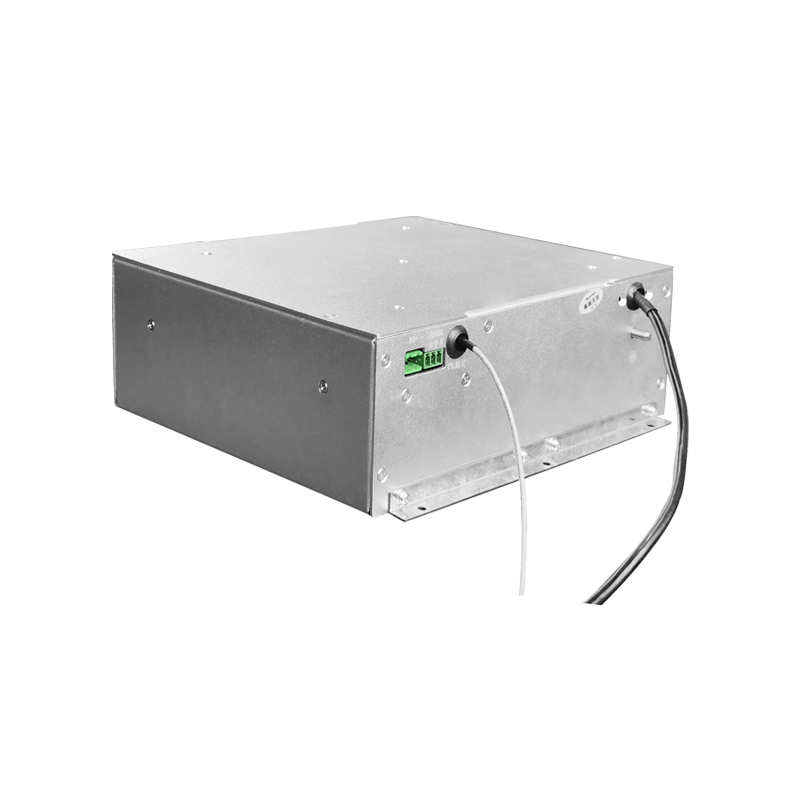Key Technologies for Image Quality Enhancement in Image Intensifier High-Voltage Power Supplies
The performance of image intensifiers (e.g., X-ray enhancement tubes, night vision devices) critically depends on the stability and noise control capabilities of high-voltage power supplies. Power quality directly affects output image contrast, resolution, and signal-to-noise ratio (SNR). This article explores the core role of high-voltage power supplies in image quality enhancement from three aspects: power stability design, noise suppression, and dynamic control.
1. Relationship Between Power Stability and Image Gain
The total gain of an image intensifier is determined by both minification gain (input/output screen area ratio) and flux gain (electron kinetic energy conversion efficiency). Flux gain is positively correlated with anode voltage; typical intensifiers require 15–25 kV with voltage fluctuations below 0.05% to prevent brightness inhomogeneity and edge distortion. Key designs include:
1. Precision Voltage Divider Control
High-value resistors (100 kΩ–10 MΩ) connected in series between the photocathode, focusing electrode, and anode form a uniform electric field. The input screen uses cesium iodide (CsI) columnar crystal phosphors, whose high X-ray absorption and photoelectric conversion efficiency enhance initial electron generation but require stable high voltage to maintain electron focusing paths.
2. Dynamic Feedback Mechanism
Real-time output voltage sampling via a resistive divider feeds back to a PWM controller to adjust the duty cycle. An inverter-boost topology (e.g., DC/DC + multi-stage voltage multiplier) converts low input voltage (3.7–5 V) to high voltage with drift <0.05%.
2. Power Noise Suppression Strategies for Image Quality
High-voltage power noise primarily originates from switch transients (e.g., MOSFET switching), rectifier diode reverse recovery currents, and external electromagnetic interference, manifesting as image ripple, artifacts, or SNR degradation. Key countermeasures include:
1. Conducted Noise Suppression
LC Filtering and Feedthrough Capacitors: A π-type LC filter (inductance ≥100 μH, low-ESR ceramic capacitors) at the output suppresses >100 kHz high-frequency noise; feedthrough capacitors integrated into the power supply housing reduce parasitic inductance coupling.
RC Snubber Networks: Parallel RC circuits (e.g., 100 Ω + 1 nF) across rectifier diodes suppress voltage spikes caused by reverse recovery.
2. Radiated Noise Shielding
The intensifier housing employs a triple-layer shield: outer lead plate (X-ray shielding), middle beryllium alloy (mechanical support), and inner permalloy layer (magnetic shielding), combined with grounded graphite coating to block external magnetic fields (e.g., geomagnetism) that distort electron trajectories.
3. Dynamic Power Control for Scene Adaptation
1. Automatic Brightness Control (ABC)
Light sensors monitor output screen brightness to dynamically adjust microchannel plate (MCP) voltage, preventing highlight saturation. For example, ABC reduces MCP voltage within milliseconds during sudden light intensity changes to avoid fluorescent screen overload.
2. Gated Cathode Technology
In high-illumination environments, an automatic gating circuit switches photocathode voltage at kHz frequencies (on/off ratio <1:100) to maintain electron emission efficiency. Experiments show this technology preserves resolution >3 lp/mm even at 10^5 lux illumination and extends tube life to 15,000 hours.
4. Future Trends: Integration and Intelligence
On-Chip High-Voltage Modules: Integrating dividers, inverters, and filters into system-in-package (SiP) modules reduces wiring-induced noise and improves power response speed.
AI-Driven Voltage Calibration: Scene illumination prediction dynamically optimizes anode voltage—e.g., boosting to 22 kV for low-light medical fluoroscopy to enhance weak signals, or reducing voltage for industrial inspection to minimize noise.
Conclusion
Image quality enhancement in intensifiers is fundamentally a systemic effort of high-voltage precision × noise suppression × dynamic control. Power supplies must achieve microsecond-level voltage regulation and μV-level ripple, while physical shielding and algorithmic compensation (e.g., wavelet denoising) collaboratively reduce noise. Future integrated power supplies and intelligent adaptation technologies will further push the performance boundaries of intensifiers in medical imaging, high-speed photography, and beyond.




















